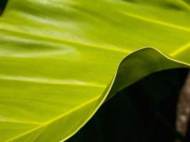Medang tree provides key to greener chemistry
 Researchers at the Research School of Chemistry of the Australian National University (RSC – ANU), Canberra, discovered that a rare tree found in Malaysia and Borneo holds the secret to greener chemical production. They managed to create a ten-step method which employs a new, environmentally friendly approach to replicate kingianins molecules found in the Medang tree.
Researchers at the Research School of Chemistry of the Australian National University (RSC – ANU), Canberra, discovered that a rare tree found in Malaysia and Borneo holds the secret to greener chemical production. They managed to create a ten-step method which employs a new, environmentally friendly approach to replicate kingianins molecules found in the Medang tree.
Kingianins molecules have shown promise as a lead in anti-cancer drug development, however, the exploration of their full potential has been hindered due to the fact that their extraction from the Medang tree results with minute quantities unsuitable for proper experiments.
The research team, led by Professor Michael Sherburn and Dr Andrew Lawrence from the ARC Centre of Excellence for Free Radical Chemistry and Biotechnology at ANU, used biomimicry of the chemical processes that operate in the Medang tree to construct kingianins using less materials, energy and time, and creating less chemical waste than previous methods.
“The kingianins we produce in the laboratory are indistinguishable from those produced by the tree and now that we have optimized the method it can be easily applied by others who wish to make similar molecules more efficiently”, said Dr Lawrence.
RSC – ANU researchers were surprised to discover that the tree’s process for making the kingianin molecules involved free radicals, which are well known to break down biological molecules.
“Kingianins have complex architectures, which would be very difficult to make using conventional chemistry”, said Professor Sherburn. “Not only are we able to synthesise them but, more importantly, we discovered a more efficient method that can be applied to making a whole range of other complex molecules.”
For more information, read the paper published in Angewandte Chemie: “Total Synthesis of Kingianins A, D, and F”.










Leave your response!